.png)
Hotel Kaneyamaen
Other Onsens in Yamanashi
Yamanashi
Gardens and Impressive Accommadation
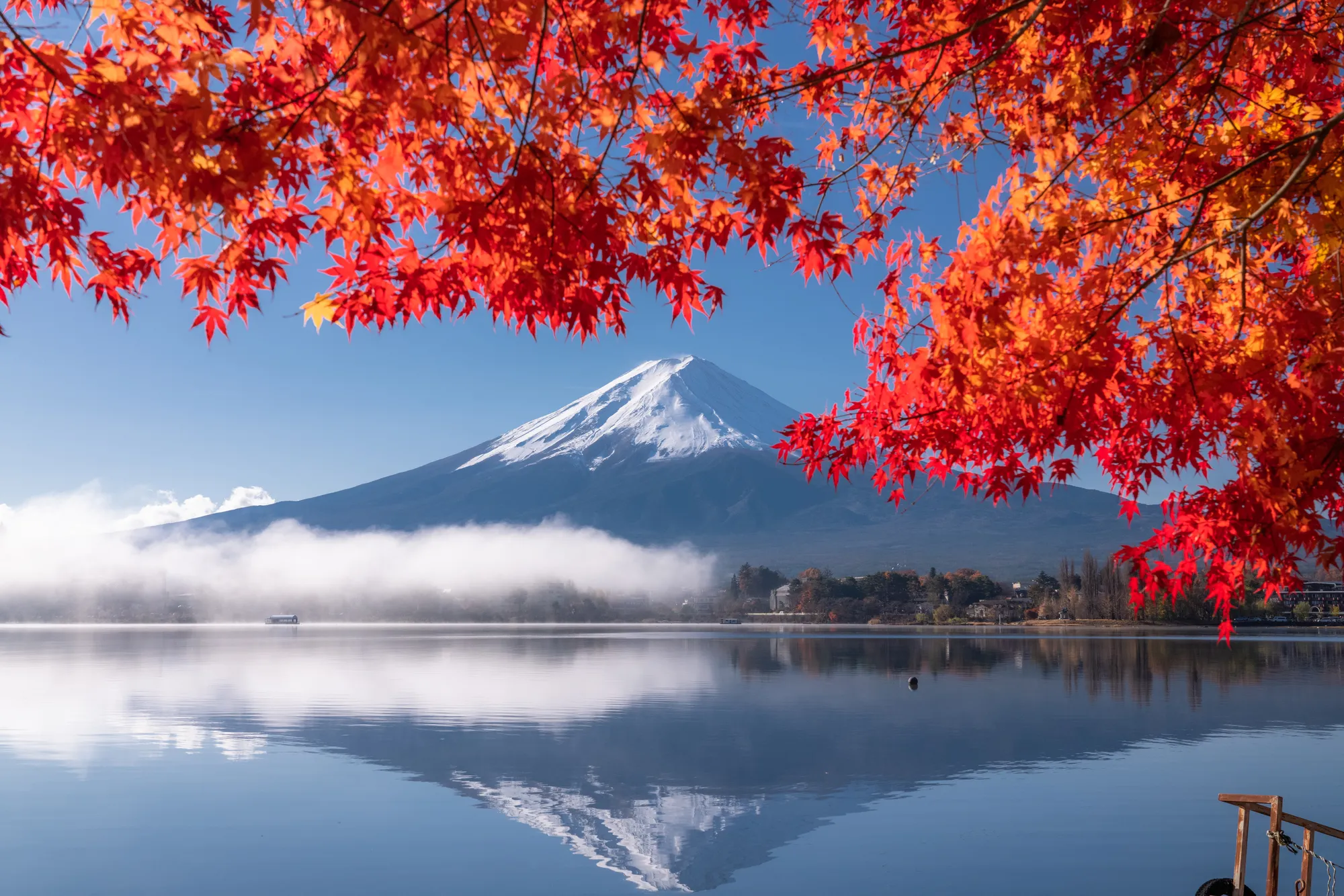

Lake Kawaguchi is one of the five lakes at the foot of Mt. Fuji. There is a [Kawaguchiko Onsen] on the shore of the lake. There are many inns and hotels in the vicinity, and the guest rooms and open-air baths with a view of Mt. Fuji, which each inn is proud of, are one of the biggest attractions of staying at Lake Kawaguchi. Some ryokan have rooms with open-air baths, so you can spend your private life carefully.
The area around Lake Kawaguchi is located at an altitude of about 830 m. Therefore, compared to Tokyo, the average temperature throughout the year is 5 to 6 degrees lower, so be prepared for the cold when visiting.
Lake Kawaguchi is a relatively easy place to visit even if you are visiting Japan for the first time. The official website is available in five languages: Japanese, English, Korean, and Chinese (traditional and simplified), and is a popular spot for tourists visiting from overseas, so there is a lot of information for foreigners on the Internet and SNS.
The cityscape of Lake Kawaguchi is a place full of its magnificent natural beauty and unique charm. First of all, the majestic figure of Mt. Fuji towers over the lake and is a sight to behold. You can enjoy the scenery of the four seasons, and the cherry blossoms color the lakeside in spring, and the autumn leaves add beautiful colors in autumn.
The cityscape is quiet, but you can also feel the bustle of a tourist destination. The lakeside is dotted with hot spring resorts and accommodations, providing healing and relaxation for visitors. Traditional Japan culture is also alive and well, with local crafts and traditional events providing visitors with a fun experience. The food culture is also rich, and you can enjoy dishes that make use of fresh local ingredients. Local markets and restaurants offer local cuisine made with local ingredients and offer tourists a taste of the region.
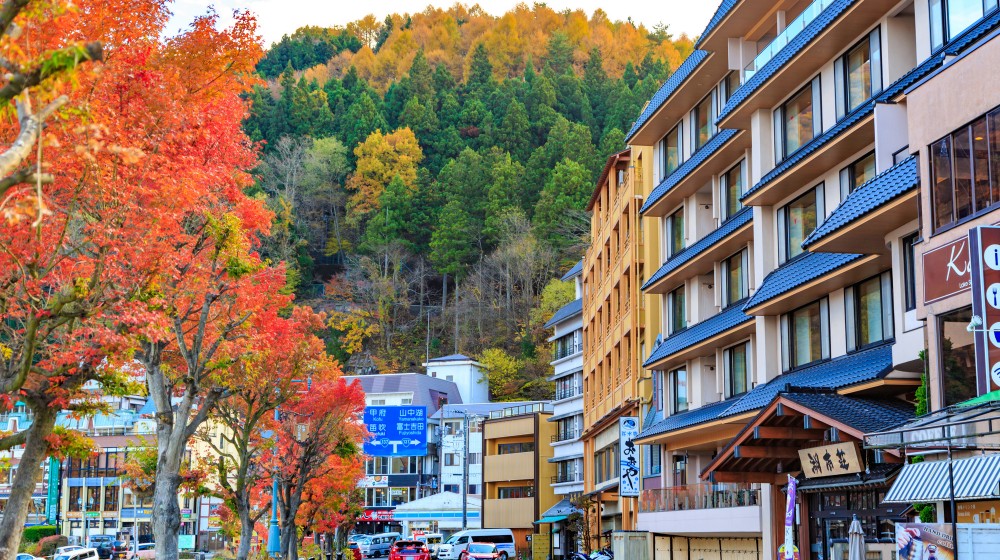
There are also lush parks and walking paths, and the scenery in harmony with nature is impressive. The lakeside park offers picnics, cycling and hiking and other activities. Overall, the cityscape of Lake Kawaguchi is a place where nature and the city are wonderfully blended, and its beautiful scenery, sightseeing spots, and warm local atmosphere attract visitors.
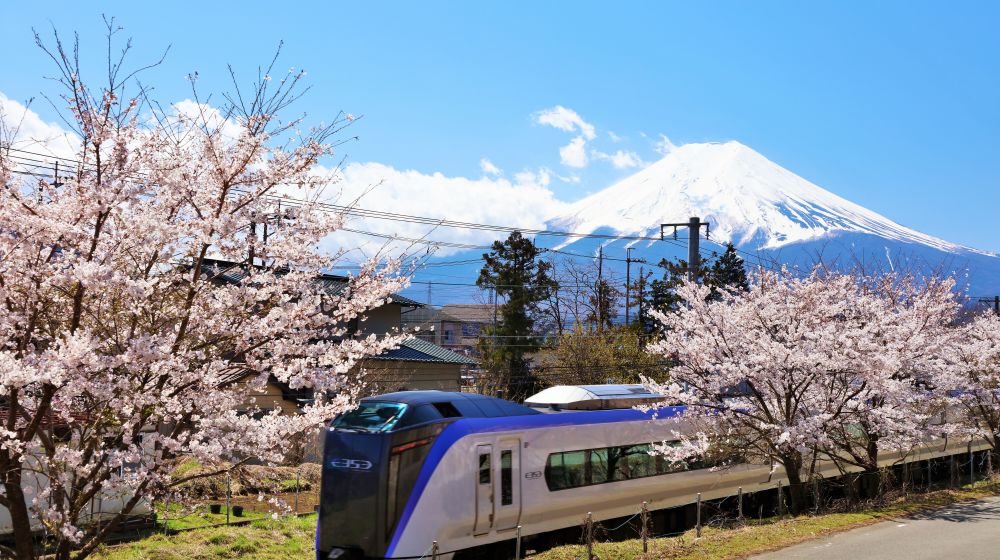
<Train and Bus>
Haneda Airport (Airport Line)→ Shinagawa Station(Yamanote Line)→ Shinjuku Station(Highway Bus)→ Kawaguchiko Station (about 2 hours 35 minutes)
<Train and Bus>
Narita Airport (Keisei Skyliner)→ Nippori Station (Yamanote Line) → Shinjuku Station(Highway Bus) → Kawaguchiko Station (about 4 hours)
< Bus>
Haneda Airport (Limousine Bus) →Shinjuku Station West Exit (Highway Bus) → Kawaguchiko Station (about 2 hours 40 minutes)
Nagoya Station (Tokaido Shinkansen) → Mishima Station (Limited Express Mishima-Kawaguchiko Liner) → Kawaguchiko Station (about 3 hours)
Kyoto Station (Tokaido Shinkansen) → Mishima Station (Limited Express Mishima-Kawaguchiko Liner) → Kawaguchiko Station (about 3 hours 42 minutes)
Shin-Osaka Station (Tokaido Shinkansen) → Mishima Station (Limited Express Mishima-Kawaguchiko Liner) → Kawaguchiko Station (about 4 hours 20 minutes)
* It is about a 1-minute walk from Kawaguchiko Station to Kawaguchiko Onsen
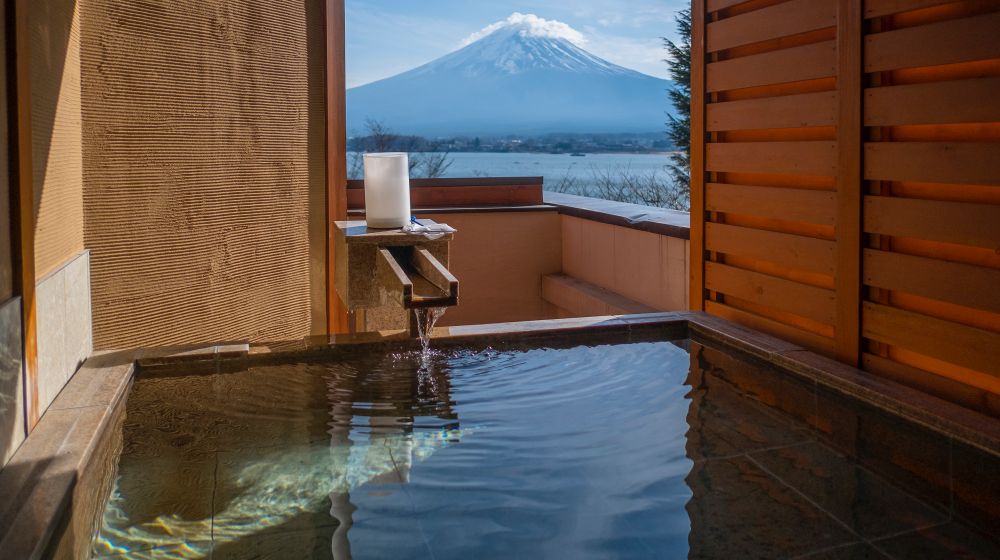
Opened in 1992, Kawaguchiko Onsen has five high-quality hot springs: "Spiritual Water Bath", "Reiho Hot Spring", "Shurei no Yu", "Heavenly Water Hot Spring", and "Fuyo no Yu".
The quality of the springs is chloride springs and sulfate springs. The blessings of Mt. Fuji and the natural hot springs gushing out from 1,500 meters underground will heal the fatigue of your trip.
.webp)
Chloride springs are hot springs that mainly contain high concentrations of sodium chloride and calcium chloride, and their components form the characteristics of the spring quality. It has moisturizing power and moisturizes the skin after bathing. In addition, its high salt content is expected to alleviate pain symptoms such as muscle pain, arthritis, and rheumatism. Soaking in hot springs dilates blood vessels, improves blood circulation, and promotes metabolism. This contributes to recovery from fatigue and alleviation of sensitivity to cold, and can be expected to refresh the whole body. It also has antibacterial and bactericidal effects, so it is said to be useful for improving skin diseases and atopic dermatitis. It has the effect of promoting the action of estrogen, one of the female hormones, and is also effective for chronic gynecological diseases and menstrual disorders. On the other hand, if you have sensitive skin or weak skin resistance, avoid long baths.
.webp)
Effects on the skin Sulfate springs soften the skin and have a moisturizing effect. As a result, it is expected to be effective in improving skin diseases and atopic dermatitis. Sulfate ions dilate blood vessels and promote blood circulation, which is effective in promoting blood circulation and relaxing muscles. This is said to relieve muscle tension and relieve symptoms of arthritis and neuralgia. It contains a lot of sodium and has a sedative effect that lowers blood pressure and relieves pain. In addition, drinking it promotes the secretion of bile and activates intestinal motility, which is expected to be effective for biliary tract diseases, constipation, diabetes, obesity, gout, etc.
It is expected to be effective for rheumatoid arthritis, osteoarthritis, low back pain, neuralgia, frozen shoulder, bruises, sprains, muscle pain, sensitivity to cold, peripheral circulatory disorders, decreased gastrointestinal function, mild hypertension, diabetes, mild hypercholesterolemia, mild asthma or emphysema, hemorrhoidal pain, fatigue recovery, and health promotion.
It is expected to improve cuts, peripheral circulatory disorders, sensitivity to cold, depression, xerosis of the skin, biliary system dysfunction, hypercholesterolemia, and constipation by drinking.
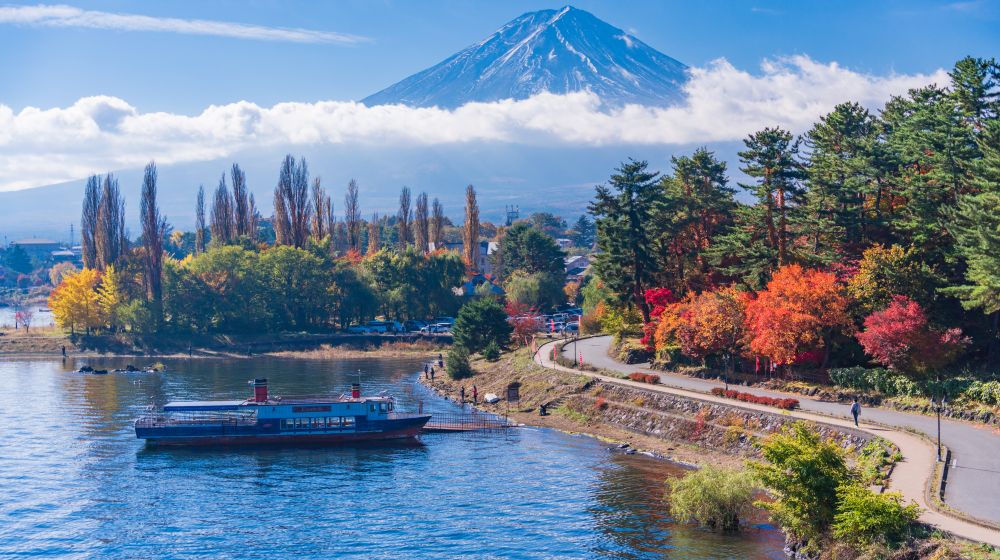
Lake Kawaguchi Onsen began in the 1990s. It can be said that it is a relatively new hot spring resort. Since there are many leisure facilities, many tourists visit throughout the year. In 2013, Mt. Fuji was registered as a World Cultural Heritage Site, and the number of tourists staying at Kawaguchiko Onsen has increased even more.
According to the Mt. Fuji World Heritage Centre,
"Evidence of the unique cultural tradition of the mountain called 'Mt. Fuji Faith'
Originating from the belief in the gods and Buddhas, who were thought to live on Mt. Fuji, the tradition of emphasizing coexistence with volcanoes and appreciating the springs at the foot of the mountains was fostered. This essence has been steadily inherited through the ages in the form and spirit of today's Mt. Fuji climbing and pilgrimage. The diverse cultural heritage created in the wake of Mt. Fuji and its beliefs shows that it is a unique testament to the cultural tradition of the mountains that are still alive today.
.webp)
Direct and tangible association with a work of art of outstanding universal significance
The iconography of Mt. Fuji depicted in ukiyo-e prints in the first half of the 19th century was widely used as a motif in modern and contemporary Western art, and not only had a great influence on many works of art in the West, but also became widely established overseas as a symbol symbolizing Japan and Japan cultures. Mt. Fuji is a unique mountain that has a direct and tangible connection to a work of art of such remarkable universal significance and has a symbolized meaning as a symbol of Japan and Japan culture." It has been evaluated.